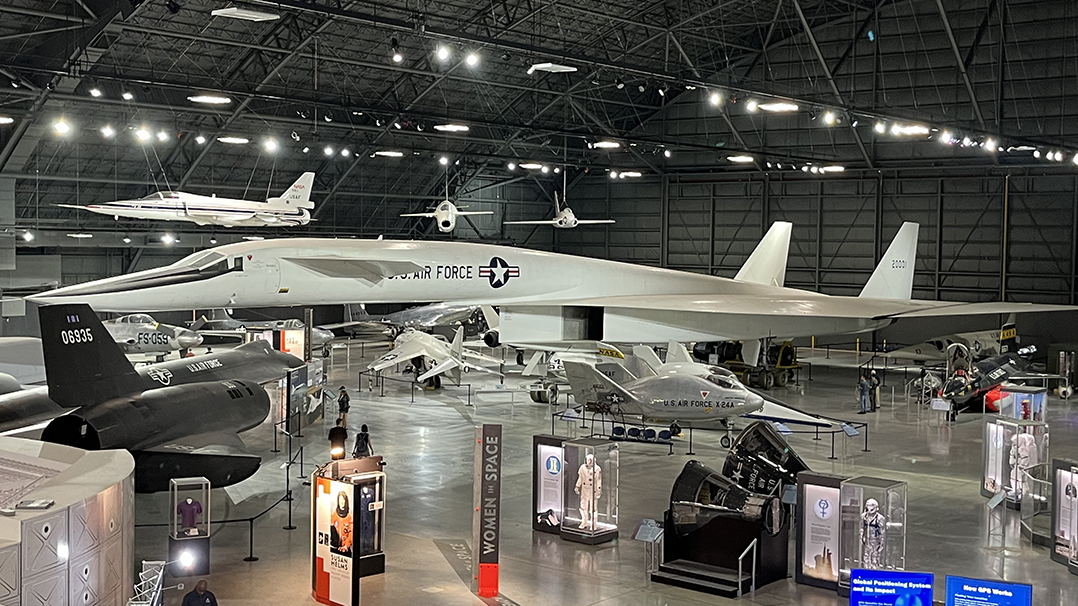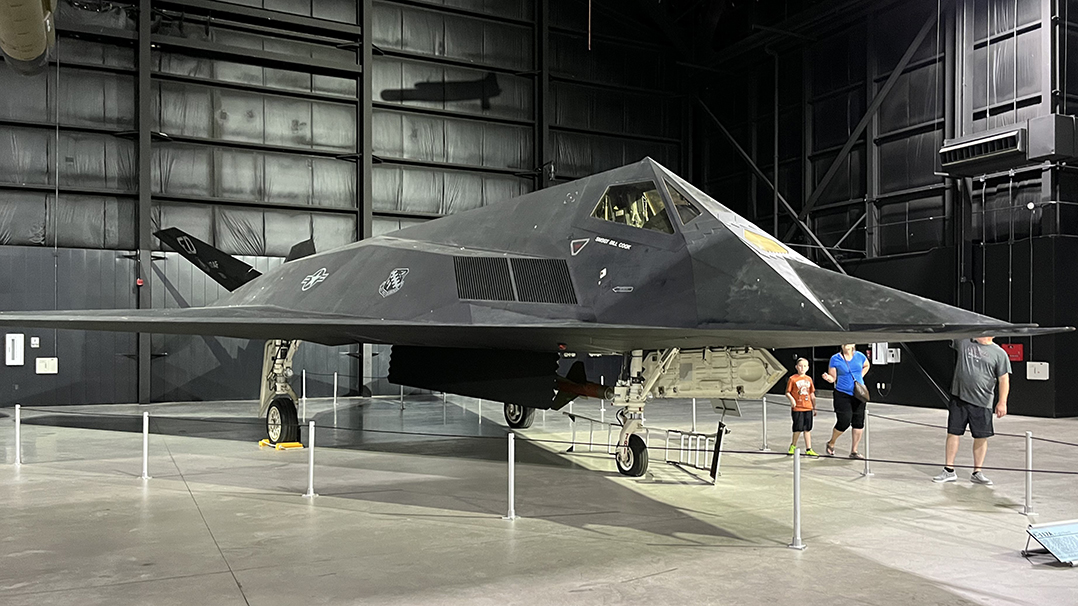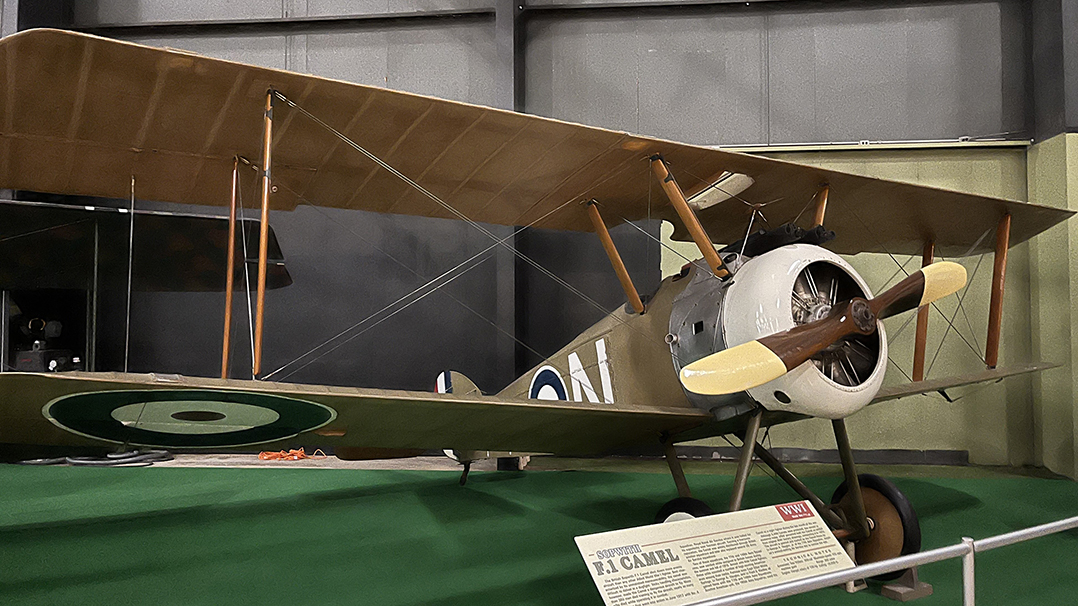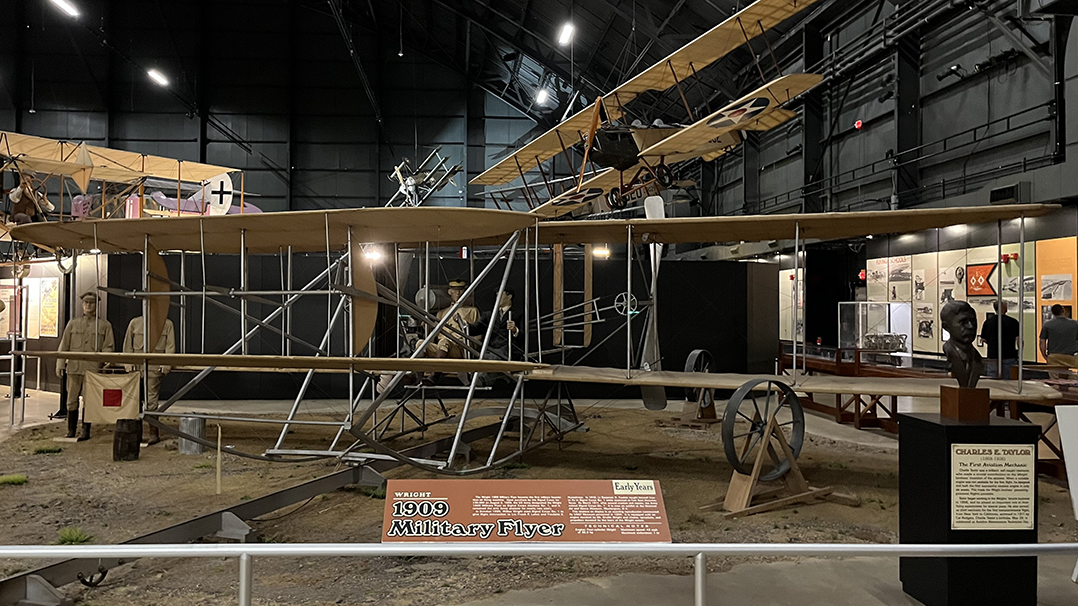In our continuing visits to places within easy driving distance of Indianapolis, we resume our exploration of Dayton’s National Museum of the United States Air Force.
Walking among the 350 or so airplanes on display in the 19-acre museum makes one conclusion unavoidable — 80 years after a Wright brothers airplane became the nation’s first powered military aircraft, an enormous amount of progress had been made in the design of military aircraft, some made very quickly.
The earliest powered airplane on display is an exact reproduction of the Wright brothers’ Flyer, sold to the U. S Army for $30,000 in 1909. Like their earlier planes, this biplane had chain-driven pusher propellers in the rear, no wheels, elevators in the front and muslin-covered wooden fuselage and wings. It had a top speed of 42 mph and a range of 40 miles. Just eight years later, the Sopwith F.1 Camel, which destroyed more German aircraft than any other Allied airplane, featured wheels and a rotary engine driving a single puller propeller in front. It had a top speed of 112 mph, a range of 300 miles and could reach an altitude of 19,000 feet. Fast forward to 1964 and the North American XB-70A, a bomber with a top speed of 2,056 mph (more than three times the speed of sound), a range of 4,288 miles and a ceiling of 77,350 feet. Also on display is the Lockheed F-117A, introduced in 1981, the world’s first operational aircraft capable of evading enemy radar, with an unlimited range enabled by inflight refueling.
The National Museum of the United States Air Force is open, with free admission and parking, from 9 a.m. to 5 p.m., seven days a week, except Thanksgiving, Christmas and New Year’s Day. Visitors are advised to arrive early, go first to the back of the museum and work forward.







